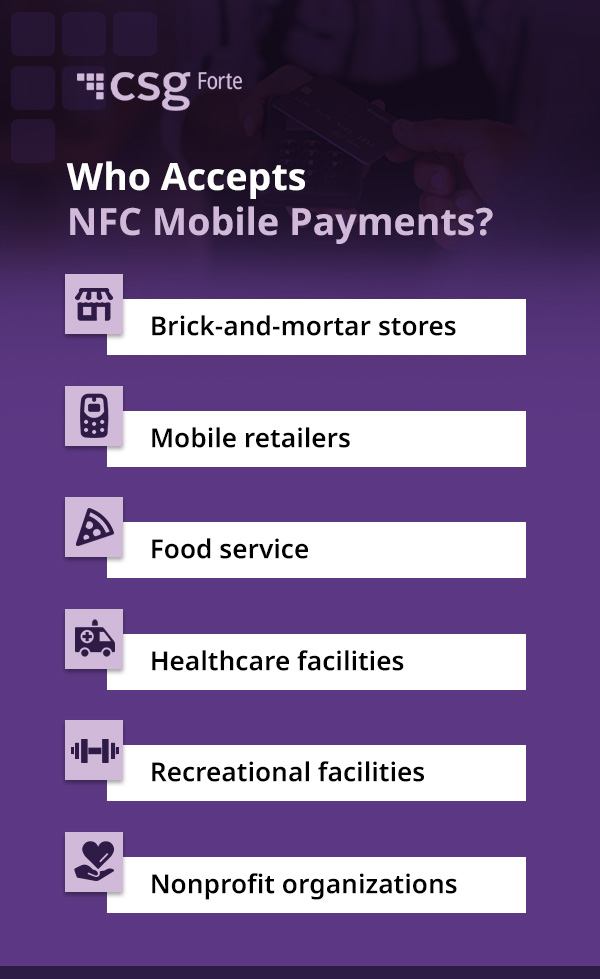Mode of Payment – Guide to All Payment Types
Cash, check or card—it wasn’t long ago that these were the only options people had when paying for a purchase. Today, customers have more choices than ever, including using their phones to pay at a store or restaurant or transferring money directly from their savings or checking accounts.
Accepting as many different methods of payment as possible allows your business to accommodate numerous customers. But first, you must understand what types of payments are available to use and what your company needs to do before accepting them.
What Is a Mode of Payment?
A mode of payment is how a customer pays for a purchase. When out with a group of friends, someone might pull out their phone and use a digital wallet to pay for a round of drinks. While shopping online, that same person may reach for their credit card to buy a new outfit. If they’re browsing a farmers market, they may hand over cash when purchasing their fruits and vegetables for the week.
The type of payment method a person uses can be dictated by what they’re buying and where they’re making their purchase. If they’re ordering online or over the phone, they can’t use cash or another physical payment form. Some merchants also prefer contactless forms of payment for in-person sales, as these are faster and easier than using cash or swiping cards.
Types of Payment Methods
Many payment methods are available today—integrating them into your operations is just a matter of which ones your business chooses to accept. Among your options are:
Card Payments
Card payments are convenient for customers, as individuals can carry less cash or make purchases online with their cards. Compared to cash, cards offer a sense of security. If a card gets lost or stolen, the cardholder can block it and report any fraudulent purchases made without paying for them.
Each type of card payment has different rules:
- Debit: Debit cards typically connect to a checking or savings account. When a customer uses their debit card, the purchase amount gets pulled directly from their account.
- Credit: Credit cards are a type of revolving credit or loan. When someone pays with a credit card, they are borrowing to make the purchase. Depending on when they pay their card balance, they may also have to pay interest.
- Prepaid: Prepaid cards are similar to debit cards, but they don’t connect to a standard bank account. Instead, a person purchases a card for a specific amount, such as $200. Whenever they pay for something using the card, the purchase amount gets subtracted from the card’s balance.
- Contactless: Contactless cards can be debit, prepaid or credit cards. Instead of inserting the card into a terminal or swiping it through a magnetic reader, a person paying with a contactless card waves or taps the card over an interface.
Phone Payments
Customers can use their phones to pay for purchases. They may place an order over a phone or use the device itself as a mode of payment.
Digital Wallets
Digital wallets store people’s payment card information on their smartphones. A customer can load their debit and credit cards to their digital wallet, along with gift cards for certain stores. Many digital wallets can communicate with credit card terminals through contactless near-field communication (NFC) technology.
Digital wallets are meant to be more secure compared to carrying around a physical card. To access the payment information, a person may need to input a special code or provide biometric information, such as their fingerprint.
People can use digital wallets when shopping online, too. When they use their digital wallet, they don’t share their credit or debit card number, making the transaction more secure.
IVR
Interactive voice response (IVR) is another payment method that uses a phone. Your customers can call into your messaging system and use IVR to pay a bill. The system is completely automated, allowing customers to access it 24 hours a day.
With customers paying over the phone, CSG Forte Engage enables leading organizations to streamline call center operations, improve payment security and enhance the customer experience. Businesses of all industries, ranging from government entities to insurance companies, can benefit from this user-friendly call center payment solution.
By Text
While people use their phones more than ever, they aren’t always making or receiving calls. Text messaging is often the preferred communication form. It can also be an easy way for customers to pay. Text to pay systems send customers a payment reminder through text. They can then click a link in the text, which directs them to a payment gateway.
Text to pay methods help ensure timely payments.
Online
Customers have many payment options when paying online, from inputting their credit card information on a checkout page to using their digital wallet. They can also pay through the Automated Clearing House (ACH) or eChecks to pull funds directly from their checking accounts.
Depending on the platform your company uses, customers can save their preferred payment method and information. The next time they visit your online store to place an order, all they need to do is click on their saved information to complete their purchase.
Buy Now, Pay Later
Buy now, pay later programs allow customers to split up payments into equal installments. Instead of $100 upfront for a sweater, a customer who chooses a buy now, pay later program can make four $25 installment payments. They can pay the first $25 after one month and then pay $25 per month for three more months.
When someone opts to use a buy now, pay later program, the company providing this service pays the merchant the full cost of the purchase (such as $100 for the sweater). The customer then makes payments to the buy now, pay later servicer. Whether they pay interest depends on the terms of the agreement and if they can keep up with the payment schedule.
Crypto
Most payment methods use the currency of the country your business is based in, such as U.S. dollars for U.S.-based companies. If your company accepts cryptocurrency, it receives payments in a completely digital currency. Crypto payments are based on the blockchain and are meant to be more secure than other forms of payment.
Benefits of Accepting Different Payment Types
Between credit card payment methods, digital wallets, buy now, pay later schemes and old-fashioned payment methods like cash and checks, you may feel your head start to spin. While you might want to keep it simple and limit the number of payment methods you accept, sometimes more is better.
You can reach out to more customers by casting a wide net and accepting more methods of payment. Everyone has their preferred way to pay, whether it’s a credit card, digital wallet or third-party payment system like Paypal or Venmo. You don’t want to alienate customers or turn down a sale because you can’t accept their preferred payment.
Accepting multiple forms of payment also creates a more positive customer experience and helps your business stay competitive.
How to Choose the Right Payment Method for Your Business
While you do want to accept multiple payment options, this may not be possible with all forms of payment. Your business’s format might automatically rule out some payment types. For example, if you’re entirely online, you probably don’t want to accept cash or paper checks, as doing so would mean you’d have to wait for those payments to physically arrive. You may also not want to deal with the hassle of setting up a crypto wallet.
Similarly, if your average order size is on the small side, such as less than $25, offering buy now, pay later options may not make sense.
Beyond that, consider your business’s structure. If you operate on a subscription model, accepting digital and card payments can streamline the process, as customers can provide their payment information once. ACH payments may be another appropriate option for a subscription-based company.
What to Consider When Choosing a Payments Provider
Once you’ve settled on the types of payment methods to accept, you need to choose a payment provider that offers them. There are a few essential features to look for in a payment provider.
- Price: Providers use various pricing structures, such as taking a percentage of each transaction or charging a flat fee. Look for a provider with an upfront, crystal-clear pricing structure so you know what you’re paying and why.
- Security: Your customers are counting on you to protect their payment information. Look for a provider that puts security first.
- Scalability: Ideally, the payments provider you choose will work with your business now and accommodate your needs as your company grows in the future.
- Revenue: The payment methods you accept influence how quickly your company gets paid for products or services. The right payment provider can help you boost your revenue.
- Integrations: Your business may already use certain platforms, and you may wish to continue using those platforms. Look for a payment provider that integrates with your current systems.
- Reporting: The more data you have about transactions, the better able you are to make decisions for your business. Choose a payments provider that offers insights into and reports on your transactions.
How Can CSG Forte Help Your Business?
CSG Forte is your partner in payments. We can help you grow your business through our unified payments platform. Whether you choose to accept payments online, by phone, in person or all of the above, we can help you do so.
Our platform quickly integrates with your current systems, allows for multichannel payments, and support is available when you need it. Our platform also has built-in Payment Card Industry (PCI) compliance and follows the industry’s highest security standards.
Choose CSG Forte
Expand your accepted payment methods and grow your business. Talk to us today to learn more about how we can help.












